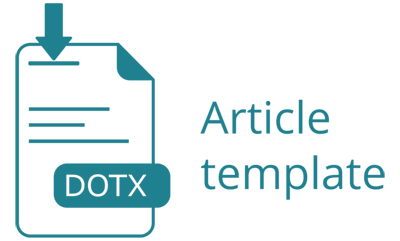Proses Gatekeeping Berita Citizen Journalism Pada Akun Instagram @prfmnews
DOI:
https://doi.org/10.15575/annaba.v9i1.37762Keywords:
Gatekeeping, Gatekeeper, Citizen journalism, @prfmnewsAbstract
References
Anderson, C. (2009). Free: The Future of a Radical Price. Hyperion.
Atul Insaroh, F. K., & Rohayati, R. (2022). Partisipasi Citizen Journalism di media online Tribun Pekanbaru. Jurnal Riset Mahasiswa Dakwah dan Komunikasi, 3(5), 278. https://doi.org/10.24014/jrmdk.v3i5.10360
Bittner, J. R. (1996). Mass Communication: An Introduction. Englewood Cliffs, NJ: Prentice Hall.
Bittner, J. R. (2014). Mass Communication: An Introduction. Nurudin (Ed.). Jakarta: Rajawali Press.
Bowman, S., & Willis, C. (2003). We Media: How Audiences are Shaping the Future of News and Information. The Media Center at the American Press Institute.
Brodie, J. (2014). Citizen Journalism: Taking Power Back in the Information Age. Palgrave Macmillan.
Bruns, A. (2005). Gatewatching: Collaborative Online News Production. Peter Lang Publishing.
Bucur, V., & Ban, A. (2019). Media Gatekeeping in the Digital Age. New York: Routledge.
Creswell, J. W. (2013). Qualitative Inquiry and Research Design: Choosing Among Five Approaches. Los Angeles: SAGE Publications.
Darmanto, N., & Delliana, S. (2020). Citizen Journalism as postmodern journalism. Jurnal Ilmiah Publipreneur, 5(1), 13–27. https://doi.org/10.46961/jip.v5i1.60
Dörner, A. (2012). Citizen Journalism and the Reshaping of News. New York: Routledge.
Dulwahab, E. (2010). Dakwah di Era Konvergensi Media. Jurnal Ilmu Dakwah, 5(16), 159-173. Diakses dari https://journal.uinsgd.ac.id/index.php/idajhs/article/view/353
Fakhruroji, M., Suryana, N., & Wahyudin, A. (2013). Social media, public relations, and democracy: A new challenge. Communicatus: Jurnal Ilmu Komunikasi, 7(1), 12-25. https://journal.uinsgd.ac.id/index.php/cjik/article/view/28669
Fuller, J. (2010). What is Happening to News: The Information Explosion and the Crisis in Journalism. University of Chicago Press.
Gillmor, D. (2004). We the Media: Grassroots Journalism By the People, For the People. Sebastopol, CA: O'Reilly Media.
Jannah, Ametha Wardah Riyadhul. (2023). Peran Gatekeeper @infocimahi.co dalam Publikasi Berita Jurnalisme Warga. Skripsi, UIN Sunan Gunung Djati Bandung
Janowitz, M. (1975). Professional models in journalism: The gatekeeper and the advocate. University of Chicago Press.
Kaplan, A. M., & Haenlein, M. (2010). Users of the world, unite! The challenges and opportunities of social media. Business Horizons, 53(1), 59-68.
Lewin, K. (1947). Frontiers in group dynamics: II. Channels of group life; social planning and action research. Human Relations, 1(2), 143-153.
Lubis, D. (2014). Social Presence Theory in Social Media Interactions. Jakarta: PT Gramedia.
Lubis, E. E. (2014). Potret media sosial dan perempuan. Parallela, 1(2), 97–106.
Marwantika, A. I., & Prabowo, G. A. (2023). Citizen Journalism: Teori, Praktik, dan Model Literasi.
Mayfield, A. (2008). What is social media? iCrossing, 1–36. http://www.icrossing.co.uk/fileadmin/uploads/eBooks/What_is_Social_Media_iCrossing_ebook.pdf
Nurudin. (2014). Pengantar Komunikasi Massa. Jakarta: Rajawali Press.
Pavlik, J. V., & McIntosh, S. (2013). Converging Media: A New Introduction to Mass Communication. New York: Oxford University Press.
Perreault, G. (2022). Gatekeeping. March. https://doi.org/10.4135/9781544391199.n177
Perreault, G. (2022). The gatekeeper: A case study in the selection of news. Retrieved from https://www.academia.edu
Raco. (2010). Metode Penelitian Kualitatif: Jenis, Karakteristik, dan Keunggulannya. PT Grasindo.
Rosen, J. (2006). The End of Journalism as We Knew It. PublicAffairs.
Shirky, C. (2008). Here Comes Everybody: The Power of Organizing Without Organizations. New York: Penguin Books.
Shoemaker, P. J., & Vos, T. P. (2009). Gatekeeping Theory. New York: Routledge.
Short, J., Williams, E., & Christie, B. (1976). The Social Psychology of Telecommunications. London: John Wiley & Sons.
Singer, J. (2014). User-generated visibility: Secondary gatekeeping in a shared media space. New Media & Society, 16(1), 55-73.
Sugiyono. (2015). Metode Penelitian Kuantitatif, Kualitatif, dan R&D. Bandung: Alfabeta.
Thompson, A. (2005). From Couch Potato to Citizen Journalist. Lexington Books.
Wardle, C., & Derakhshan, H. (2017). Information Disorder: Toward an Interdisciplinary Framework for Research and Policy Making. Council of Europe report.
Westley, B. H., & MacLean, M. S., Jr. (1957). A conceptual model for communications research. Journalism & Mass Communication Quarterly, 34(1), 31-38.
White, D. M. (1950). The gatekeeper: A case study in the selection of news. Journalism Quarterly, 27(4), 383-390.
Downloads
Published
Issue
Section
Citation Check
License
LETTER OF COPYRIGHT ASSIGNMENT
Â
As an author of Tabligh: Jurnal Komunikasi dan Penyiaran Islam of Program Islamic Communication and Broadcasting, Dakwah and Communication Faculty, UIN Sunan Gunung Djati Bandung, I, who sign below:
 Declare:Â
Â
- My paper is authentic; my own writing and it has not been published/proposed on any other journals and publication.
- My paper is not plagiarism but my original idea/research.
- My paper is not written by other help, except with Board of Editors and Reviewers recommendation who have been chosen by this journal.
- In my paper, there are no other writings or opinions except referred in bibliography and relevant with the rule of writing in this journal.
- I give all my copyright of this paper to this journal include the right for managing and publication.
- I make this assignment surely. If there are distortion and untruth in this assignment, later, I will take responsibility as the current law. Â





